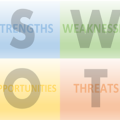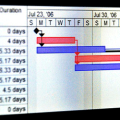
Effective decision-making is a critical skill that has big ramifications in both personal and professional life.
Projects often present complex choices where the optimal path is unclear or every option carries significant trade-offs. How can we navigate these challenges with confidence?
This article explores the science behind strong decision-making, offering practical steps to select the best course of action from multiple alternatives, while considering the influence of values, beliefs, and preferences on the process.
What are the 6 Steps to Strong Decision Making?
There are 6 steps to a strong decision making process:
- Identify the problem
- Gather information
- Identify the alternatives
- Determine the pros and cons
- Choose an alternative
- Review the decision
Identify the Problem
Establishing the full boundaries of the problem is often an underrated first step, but it is quite common to define the core of the problem and miss some of the externalities. Here is a checklist that can assist in determining the full boundaries of the problem:
- What actions led to the problem?
- Who was involved?
- Who does the problem affect?
- When did the problem first occur?
- When does the solution need to be implemented?
- Where did the issue happen?
- Where will the solutions take place?
- How did the problem arise?
Essentially, it’s an application of the 5 W’s plus H.
In our engineering firm we frequently complete “assessment reports” which seek to find the preferred course of action regarding a piece of infrastructure (road, bridge, etc.), usually after an inspection indicates a problem. This includes determining the alternatives, pros and cons, lifespans, and costs, in order to make a decision regarding the path forward. It is easy to look at the situation as a problem that needs to be solved with several alternatives, but it’s the off-the-beaten-path options that often make the analysis great. Things like alternative repair scenarios, doing quick fixes and then major repairs later, and so forth.
Thinking outside of the box is a necessity at this stage. And this thrives only in an environment of a well defined problem.
Gather Information
Once the problem is defined, all of the required background information is assembled. Any information that has a small chance of being relevant must be included, even if it’s not obvious right away.
In a court of law they have a process called “discovery,” a phase where each party gathers the information they need to make their case. In discovery, each side presents their information requests to the other and they must comply. Discovery is usually the most time consuming phase of a legal case. And if it’s that important to winning in court, then it’s probably also that important to other decisions.
Of course, the information itself might make the decision for you. If information is received that reveals an obvious decision (a common occurrence), the whole process concludes immediately.
The information gathered is defined as explicit knowledge. It is important not to forget about tacit knowledge such as personal experience, cognitive skills, and memory of the past. For example, personal experience with past, similar projects could be an important piece of information factoring into the decision.
Identify the Alternatives
 The information-gathering step leads into the identification of a list of all the alternatives.
The information-gathering step leads into the identification of a list of all the alternatives.
Firstly, the underlying issues which affect the decision must be identified. These underlying issues define the hard interfaces between alternatives. For example, if a bridge is in poor condition because of the girders, replacing only the girders is an option. But if the bridge is also too small, replacing the whole bridge is an option. The underlying issues are a) the condition of the girders and b) the size of the bridge, and each of these underlying issues results in an alternative for consideration.
The underlying issues often come with risk analysis requirements, for example what if there is a problem with accidents at the bridge. Risk has two components, probability and severity:
The probability and severity of the underlying issue must be defined and it also becomes an underlying issue, that is, a hard interface between options. For example, replacing the bridge without extra guardrail vs. replacing the bridge with extra guardrail both become options, and the latter has a cost with a corresponding benefit.
Sometimes the alternatives might come on a scale, and you can choose anywhere on the scale. In this case, the scale can be approximated as two interfaces (both extremes) or three interfaces (the extremes and the middle).
Determine the Pros and Cons
Every decision is going to affect something or someone. In this step those effects are identified and understood.
Each pro or con comes with a few items of metadata:
These can occur in combination, for example when an alternative costs more but lasts longer. Or it represents a cost as stakeholder money in the future.
An alternative can produce a non-monetary benefit, in which case a cost-benefit analysis is important, but the decision makers must decide for or against the benefit in light of their budget (i.e. competing demands for money). The non-monetary benefit must be presented side by side with the monetary ones within each alternative.
Choose an Alternative
 Once all of the alternatives have been identified, the decision must be made. The decision making process can take several forms:
Once all of the alternatives have been identified, the decision must be made. The decision making process can take several forms:
- The decisional balance sheet involves listing the pros and cons and making a decision qualitatively and subjectively between them.
- Expected value optimization involves making the decision based on the highest utility, that is, it has the most benefit to the most people. But this is often difficult to define because the value of the benefit to a stakeholder is unknown.
- Automated decision support involves setting up a criteria for making the decision. A weighted decision making criteria can appease stakeholders who can readily see why the decision was made the way it was, even if it wasn’t in their favor.
- Group decision making criteria:
- Consensus requires everyone to be in agreement
- Plurality involves only the largest sub-group to decide for the group
- Voting chooses the most-supported option within the group. This can be a simple vote or can also involve ranking, or weighted votes.
- The Delphi Technique involves forming an expert panel which votes on their preferred alternative, then goes through multiple rounds of facilitated re-voting in which they should converge to one option.
Review the Decision
The decision making process is not complete unless the decision is re-evaluated to assess what the results actually were and how the pros and cons actually turned out. This is invaluable to future decisions and projects within the organization, as well as priceless lessons learned knowledge (tacit) which provides a strategic competitive advantage.











Leave a Reply